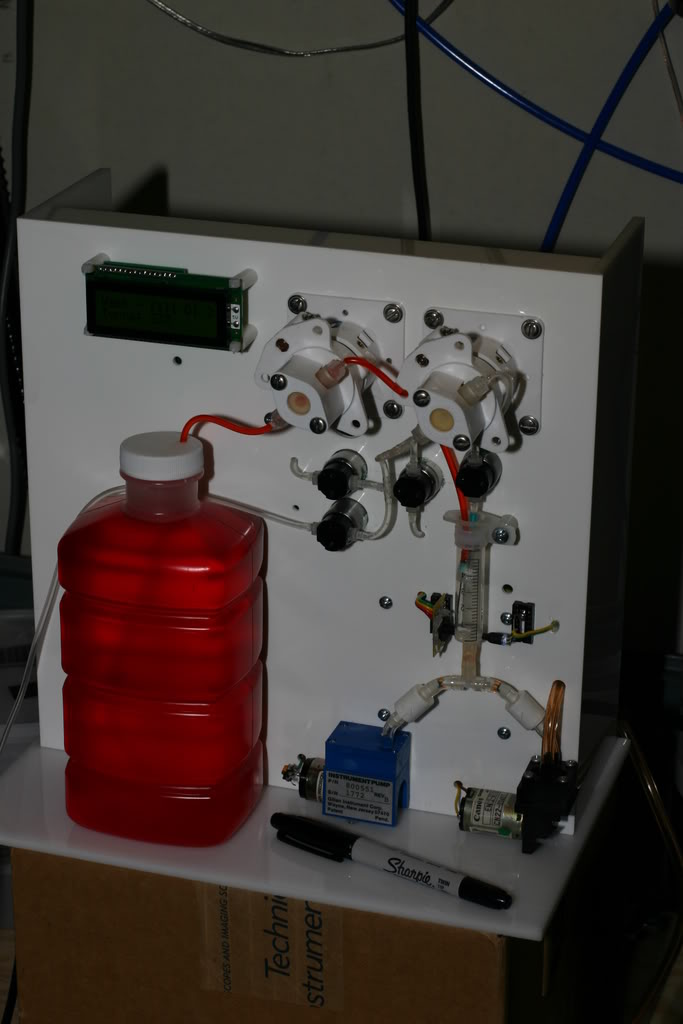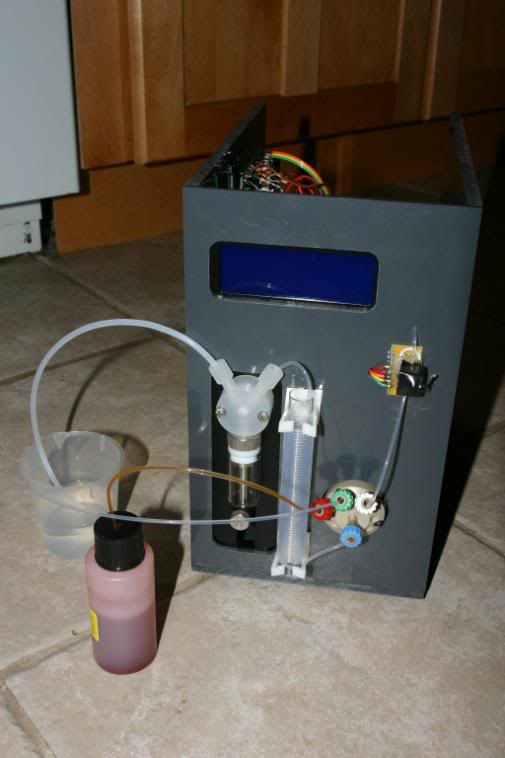- Joined
- Oct 6, 2015
- Messages
- 899
- Reaction score
- 1,269
Thanks for this very substantial information, which is very similar to my own considerations and reasons why I also abandoned all methods based on CO2(aq)-measuring. I also did the conclusion that you needs a accuracy of +- 5ppm to get reasonable results, and +- 0.02 concerning pH. I had som contacts with some companies and only the sensor should cost 1000E....The calibration issue you are telling us is very interesting information also.I better start posting something on R2R to begin to earn some credibility. Considering all the relevant folks are on this thread already (hello Randy, Jim and Jonas).
I've been working on alkalinity machines on and off for 10 years or so but didn't brag much about the progress. For me it became a hobby of its own and looks like 2017 is a going to be an interesting year for us all.
Now, here's what I wanted to say on the topic of pCO2/pH alkalinity method. First of all, Randy is definitely correct saying that the method is well established and feasible provided all the variables are measured well. Jim's estimates of Alk/CO2 dependency are on par with my calculations. Jonas is right saying that CO2 determination is not cheap but it does not end there. In fact it's much more than $$$ for a decent NDIR detector...
In my experience, the biggest challenge in pCO2 determination in tank water is inherent sensor drift and calibration difficulties. Last summer I have spent several months and a few $$$$ playing with everything related to CO2 and came to realization that it's virtually impossible to build a low-cost CO2 detector which can be left for years without routine calibration. While short-term measurement repeatability can be improved by using thermal stabilization, dual-beam detectors and modern front-end circuitry, the long-term heat source and detector drift and contamination need to be dealt with by other means. In my experiments with various NDIR detectors I was able to achieve 3-5 ppm accuracy and linearity in air but measurement drift was 0.5 to 2 ppm per day! This was very close to the results I was getting from my research grade Li-cor LI-6252. In other words, some sort of automatic calibration is necessary to achieve long-term stability in the field and that is the biggest challenge. Here I'm not talking about many other factors interfering with CO2 measurements such as water vapor, gas pressure and leaks and diffusion barrier fouling.
We can use buffers to calibrate pH sensors fairly reliably and virtually eliminate effects of drift. It's not so easy with CO2. We can establish zero point rather easily by scrubbing ambient air of CO2 and use it as zero gas, but we also need a second point for calibration of the slope of the sensor (span gas). They supply calibration gas mixtures in nice shiny cylinders which cost a few hundred bucks per bottle. They also make dynamic gas blenders which cost like a BMW. I ended up building one myself just to validate linearity and stability of my detectors and it was a lot of fun. By the way, the instruction manual for Li-cor recommends to perform daily calibration in order to achieve stated performance and still it costs like a Toyota.
In conclusion, while pCO2 by itself is an important subject to measure and it's quite possible to build a device for hobby use for well under $1k, the drift is an issue. Calibration with outdoor air (400ppm) once a week/month can get us to ~10-20 ppm accuracy which is acceptable for most applications, but determination of alkalinity via pCO2 demands an order of magnitude better stability and sadly we are not there yet. I wonder how's Mindstream doing over there...
Regards,
Kirill
P.S.
Jim - congrats on the deal and best of luck getting it to market! Those (Takasago?) pinch valves look awesome in star arrangement
Jonas - it's great to see yet another machine popping up! Now from Scandinavia.
Randy - thanks for your valuable input and for having us all here in your forum.
P.P.S. I'm sure you've seen it already, but here it is again. My first prototype from 9 years ago

I recognice your wonderful machine from some forum I think. I admire that work greatly
I wants to say that I do not see other players as concurrent´s, because as this is the product of the future there is room for more players than a few. This will be an interesting year





















